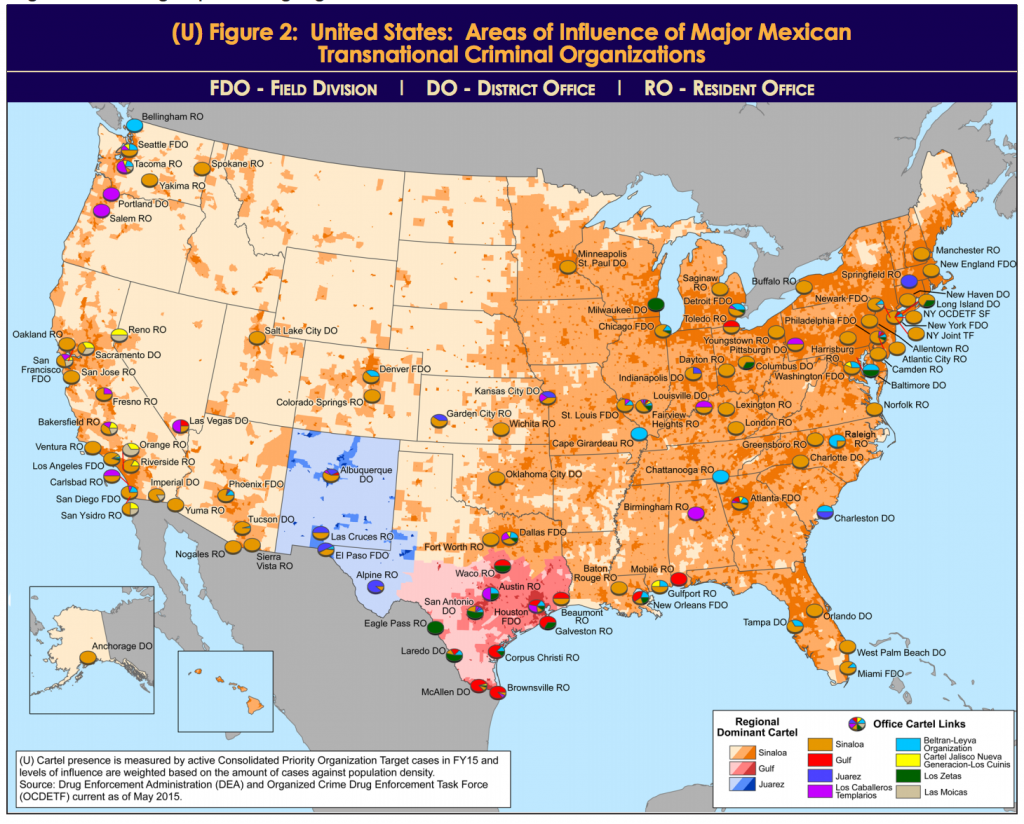Visualizing Mexico’s Drug Cartels: A Roundup of Maps by Aleszu Bajak.
From the post:
With the big news this week of the arrest of Joaquín “El Chapo” Guzmán’s, the head of Mexico’s largest drug cartel, most of the attention is being paid to actor Sean Penn’s Rolling Stone interview with the kingpin in his mountain hideout in Mexico.
But where’s the context? How powerful is the Sinaloa cartel that he has run for decades and the other Mexican drug cartels, for that matter? Storybench has been sifting through a wealth of graphics on the workings of the drug trade in Mexico and its impact on the United States that help readers begin to understand the bigger picture of this complex drug war. So now that you’ve read your fill on Sean Penn’s (and Rolling Stone’s) editorial shortcomings, check out these impressive visualizations taken from news organizations, non-profits and government agencies.
…
Bajak presents a stunning array of maps that visualize the influence of Mexican drug cartels.
One of the most interesting has the title: United States: Areas of Influence of Major Mexican Transnational Criminal Organizations.
(You will need to select the image to get a useful sized image.)
All of the maps are interesting and some possibly more useful than others, such as if you are planning on expanding drug trade in one area but not another.
What I found missing was a map of all the organizations profiting from the war on drugs. Yes?
Location and approximate incomes of drug cartels, agencies, law enforcement offices, government budgets, etc.
The war on drugs isn’t just about the income (and failure to pay taxes) of the drug cartels, it is also about the allocation of personnel and budgets in law enforcement organizations, prisons that house drug offenders, etc.
One persuasive graphic would be the economic impact on government organizations if the drug trade stopped tomorrow and drug offense prisoners were released from jail.
There is a symbiotic relationship in the war on drugs. Government agents limit available competition and help keep prices artificially high. Drug cartels provide a desired product and a rationale for the existence of police and related agencies.
A rather cozy, if adversarial arrangement. (A topic map could clarify the benefits to both sides but truth telling isn’t a characteristic of either side.)
PS: Do read the piece on what Sean Penn should have done for his interview with El Chapo. It makes a good checklist of what reporters don’t do when interviewing political candidates or sitting members of government.
They want to be asked back if you know what I mean.
